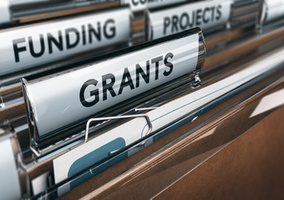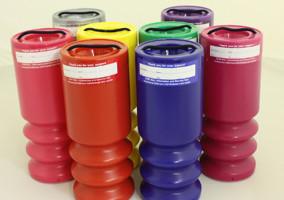We entered 2020 distantly viewing something happening on the other side of the world. Since then we have moved into totally uncharted territory, and whilst we are amidst this unprecedented time, we need to hold onto everything we’re learning as we go to help shape and plan for life during, and after the crisis. What we are doing today is absolutely vital, but so is making sure we’re looking towards the future, how we can adapt quickly in the time in between and hold onto this adaptability moving forward.
The impact on the not-for-profit sector fundraising started with dialogue channels being closed down, physical events cancelled or postponed, retail shops closed, a diminished out of home audience, and regional volunteering put on pause. Unsurprisingly, the fundraising spotlight turned to virtual events and budgets reallocated towards digital marketing. We also saw an increase in direct response tv (DRTV) in support of emergency campaigns as audiences increased on broadcast platforms, Channel 4 have reported family viewing up 37%, and a 45% increase in live TV viewing by young adults.
These trends are reflected in TV advertising, with ITV projecting a decline in advertising spend, and a reduction in cost of some prime time viewing slots (seeing changes with the majority of the population staying at home). Some brands are even donating media inventory to charities in support of their emergency campaigns.
If we look closer at these new focus areas, we have seen impressions increase from Facebook and YouTube, to major online newspaper publishers. There’s been a marginal decline in Facebook click through rates (CTR) but this is offset by their overall advertising costs falling. The same applies to display advertising, and programmatic display costs becoming more accessible as some directly affected sectors like travel and tourism reduce their investment, all indicators that this is a time to test these channels.
There are great examples of innovation and organisations using these methods to overcome challenges, whilst putting their audiences first, from the 2.6 challenge for the London Marathon, to user generated content seen in the Instagram 5k for the NHS, Facebook fundraisers and collaborations (NHS Together).
But when is the time to press the emergency button? If you haven’t already, it’s important to think about when, and if, you declare your emergency. Once this is declared to your audiences, there’s no going back on that ask. We believe that this is, and will continue to be a protracted ‘emergency’. There won’t be any ‘BAU’ activity in 2020, teams need to embrace agile ways of working so that they can react quickly and timely.
Using the five levels of Covid-19 alert to structure your response
A good way to structure a strategic plan is around the five levels of the UK Coronavirus alert system. By creating a basic approach to each level, and supporting content for each stage, you can create a much clearer narrative both externally through your campaigns, and internally to your teams. This means that you are prepared for sudden changes and can react quickly, clearly, and appropriately, which could be the difference between thousands raised, or thousands of potential revenue lost.
How can digital support emergency fundraising, or most likely, how can your organisation rethink and pivot the role of digital marketing in your programme? How can you adapt how you engage with audiences, whilst testing and investing in new ideas? View this time as an opportunity for unexpected innovation.
It’s important to consider your audience and purpose when creating your strategic plan. The nation is focused on their purchase decisions more than ever. How does the current situation impact your known supporters from a social/financial/behavioural/emotional perspective? Are your current audiences still the right ones? How closely related is your organisation and the work you do to the impact of coronavirus in the UK and globally? And do you have a responsibility to deliver any vital information to provide ongoing help and advice?
Agility will be key to the success of your ongoing response. Addressing bottlenecks in content production is important, and you can explore technology solutions like Moovly and Lumen 5 to support you. Enable your teams to make creative decisions, and have a process in place to enable quick validation and testing.
In becoming more agile, and using the alert framework as a foundation from which to build your strategic response, your organisation will be better prepared for a protracted emergency. Whilst important short term decisions need answers, it’s important to clearly identify and understand future challenges and opportunities.
Listening and speaking to lots of organisations, there is a sense that it's not just about survival today, but thriving beyond the horizon and reimagining our future. We believe that through the challenges, opportunities and change we are experiencing now, the sector will show how true organisational change and transformation is possible.
Louise Lai is transformation director at Manifesto, which has more information for charities on its website
Related articles
Adapting to life in the Covid era: How fundraisers can keep talking to supporters
How you contact supporters has changed. Alex Blake offers tips on how to maintain relationships while social distancing.
Alex Blake: Fundraising during the Covid-19 pandemic
As the pandemic continues, Alex Blake looks at how fundraisers can secure funding and what actions they can take to be proactive during this time











